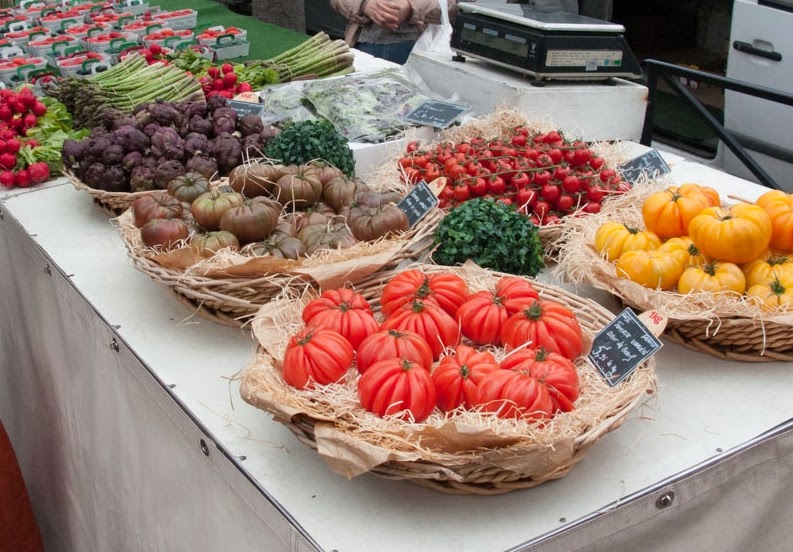The symbiotic relationship between legumes and soil bacteria has been known for well over a century. The intimate details of this relationship, however, are only recently being revealed. It is a very active area of research as understanding this symbiotic relationship could lead to strategies that help reduce the environmental impacts of food production.
 |
| Rhizobia nodules on the roots of cowpea (Vigna unguiculata). By Stdout [GFDL (http://www.gnu.org/copyleft/fdl.html), via Wikimedia Commons. |
Special soil bacteria – known as rhizobia – reside within the nodules of legumes, such as peas, lentils, beans, alfalfa and clover, which are found along the roots of these plants. The bacteria take nitrogen from the air and convert it into ammonia, which the plant is able to use – a process known as nitrogen “fixing”.
This allows legumes to grow well in nitrogen-poor soils. This nitrogen is taken up in the plant material, which can then be worked back into the soil as a natural fertiliser for subsequent crops.
While this all might sound very straight forward – there are details about this relationship that remain unclear. How do the bacteria get into the nodules? Are there signals that the plant uses to stimulate the bacteria to produce nitrogen?
An answer to a century-old debate
In 2011, researchers from the John Innes Centre in Norwich answered the mystery of how nitrogen-fixing bacteria crossed the cell walls into the nodules of legumes.
It had been a century-old debate as to whether bacteria produced the enzymes to break down the cell walls or whether the plant did. The researchers showed that it was the plant which supplied the enzymes to break down its cell walls in order to give the bacteria access.
How legumes communicate with their symbiotic bacteria
In 2010, Stanfordresearchers discovered the gene in plants that triggered the chemical signal required for the bacteria to fix nitrogen. They found that the rhizobia bacteria would just sit around in the legume nodules if the plant failed to produce the protein that’s required to spur the bacteria into nitrogen fixing mode. This was only part of the communication story.
It is energetically costly for the plant to produce and maintain the root nodules in which the bacteria live; usually the benefit of having a supply of nitrogen outweighs this cost. If there is sufficient useable nitrogen in the soil, however, the plant is able to reduce the number of nodules on its roots.
Communication between the shoots of the plant and the roots of the plant help regulate the number of nodules. The leaves transmit a signal to the roots to either develop more or get rid of rood nodules, depending on circumstances. The roots communicate back up to the leaves using molecules known as peptides.
Research published recently has now discovered that the plant shoots use plant hormones, known as cytokinins, which travel down the phloem into the roots to help regulate nodule development.
The environmental benefits of understanding legumes
Understanding the symbiotic relationship between legumes and soil bacteria is not simply a matter of scientific curiosity. The ability for legumes to produce natural nitrogen fertilisers is a trait that US researchers would like to potentially transfer to non-legume crops as a way of reducing the environmental impact of agriculture.
Manufacturing nitrogen fertilisers for non-legumes is extremely resource intensive. It has been estimated that to produce 68 kg (150 lbs) of nitrogen fertiliser – enough for one acre of corn – would be the equivalent of driving a car 1,046 km (650 miles).
Beyond that, nitrogen fertilisers release the powerful greenhouse gas, nitrous oxide, after they’ve been applied. Excess fertilisers also runoff agricultural land into rivers and lakes and eventually out into the ocean. This influx of nitrogen can provoke algal blooms and create oxygen deplete dead zones.
Therefore, there is great incentive to fully understand this relationship legumes have with soil bacteria. The environmental impact of agriculture could be significantly reduced by utilising legumes with their natural nitrogen fertiliser more by using them in more marginal land and using traditional breeding programs to select for drought resistance or temperature tolerance. In some countries, genetic engineering might even be used to introduce nitrogen-fixing abilities into non-legume species. Genetic modification, however, can be an inflammatory issue with considerable debate as to its pros and cons, particularly with respect to its use in food products.



